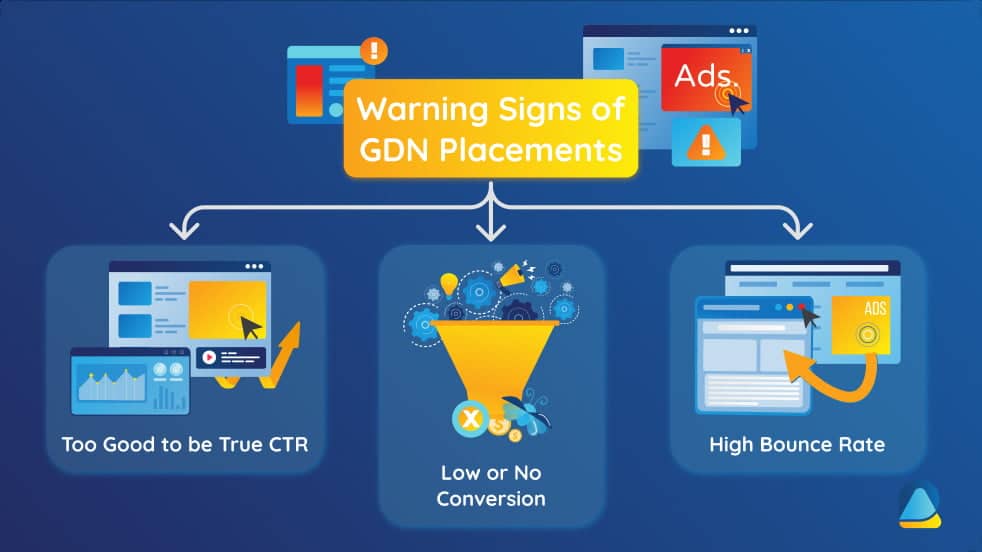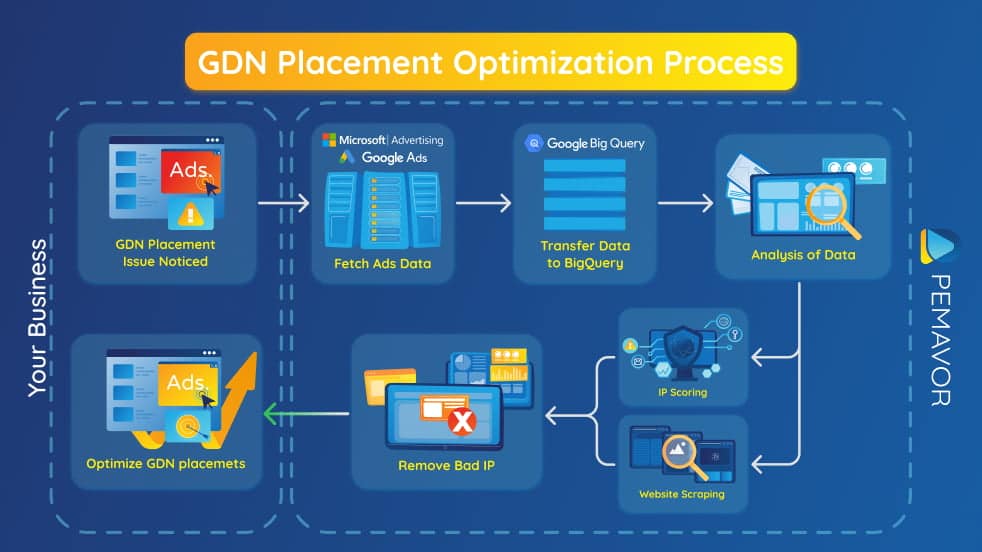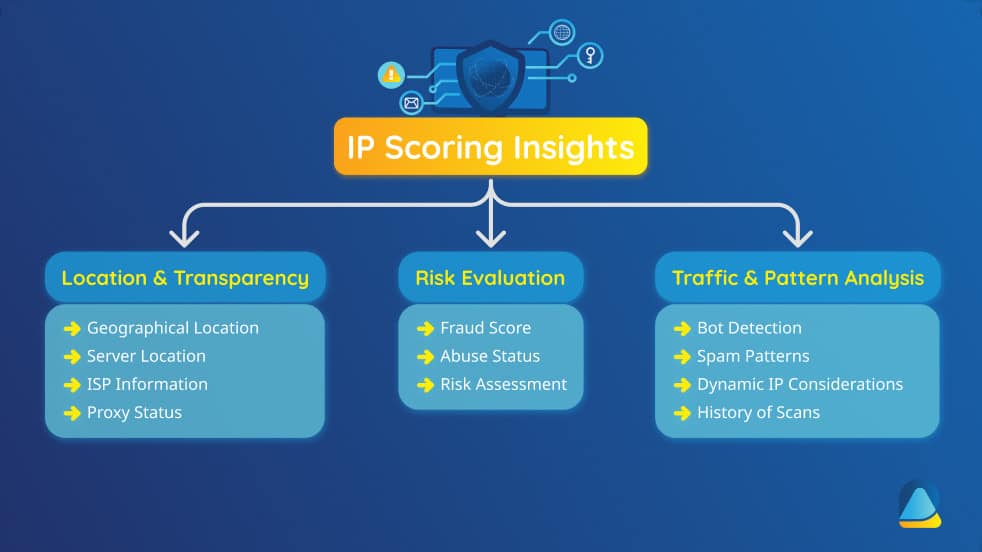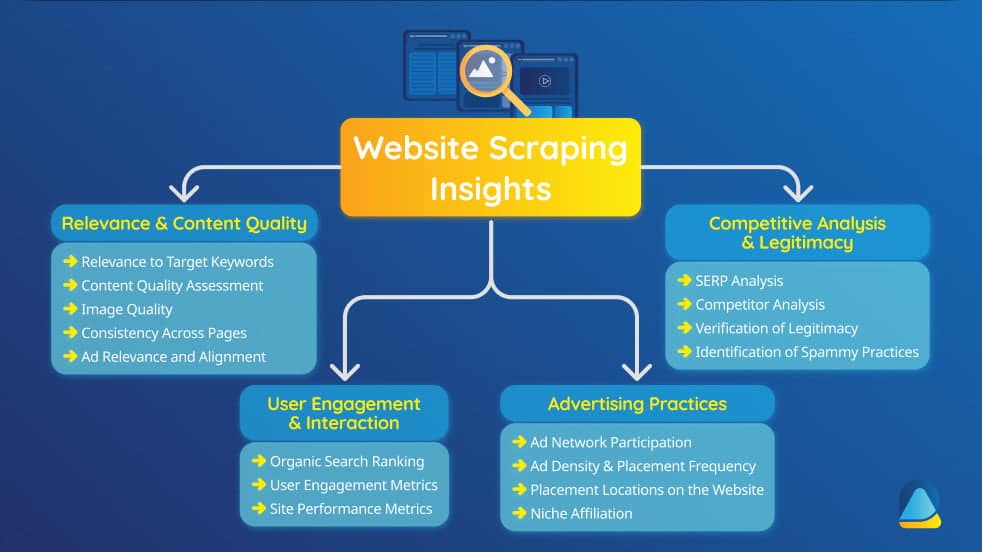Tired of wasting budget on spam? Detect and optimize display placements at scale.
Want to learn one of the most important keys to success in Google Display? Look no further than ads’ placement optimization. In addition, it seems that Google Display Network is also full of spammy websites. How can you drive quality traffic and increase conversions? The answer is simple. Block spammy ones and have quality placements on websites that provide great content and value.


Watch for exceptionally high CTRs that may hint at inaccurate reporting or ineffective targeting. Evaluate whether the engagement aligns with your campaign goals. Remember, excessively high CTRs might indicate unintentional clicks, possibly linked to fraudulent or spammy behavior.
Watch for exceptionally high CTRs that may hint at inaccurate reporting or ineffective targeting. Evaluate whether the engagement aligns with your campaign goals. Remember, excessively high CTRs might indicate unintentional clicks, possibly linked to fraudulent or spammy behavior.
Elevated bounce rates may indicate that users are landing on your page but leaving quickly. Assess the relevance and appeal of your landing pages to ensure a cohesive user experience. Additionally, be cautious of abnormally high bounce rates, as they could be indicative of spammy or fraudulent behavior rather than genuine user engagement.
We recommend starting with automated placement right away. If you have some learning budget, this is a great way to get numbers for different placements. Spending a lot of time reviewing the placements is an important process. Don’t wait for bad ROIs and watch out for CTRs that are way above average. Check websites and block them if they share spammy pattern.
Well-performing and quality websites are great managed placements for your campaigns. You’ll also find them within your automated placements and in your retargeting display campaigns. Managed placements should be the biggest part of your display traffic. However, it’s a long-running process. Avoid spending your budget on discovering good placements instead of bad ones.

In theory, the process of running automated placements and separating them into good and bad ones, is a great head start. In reality, it’s a waste of time and money. Now, let’s talk about the challenges we’re facing.

Getting a stable conversion rate requires a stable number of clicks, typically in the hundreds. However, many placements on the Google Display Network (GDN) receive only a few impressions and clicks, rendering their conversion rates unstable. Unfortunately, this instability prevents actionable insights from being derived from these placements.
The GDN landscape may expose your ads to spammy placements, hindering your campaign’s success. While manual identification and removal of these placements are time-consuming, going for a customized automated approach is the more effective and efficient option for the removal of undesirable placements.
Not all GDN placements are strictly “bad” or “good.” Avoid oversimplification in decision-making. A scalable solution involves categorizing placements by estimated traffic quality, enabling strategic budget allocation for higher-quality placements, enhancing decision-making in GDN campaigns.
Let’s do a comparison between .com domains and other top-level domains to identify performance disparities. Unique top-level domains with seemingly impressive Click-Through-Rates (CTRs) may raise suspicions of being too good to be true, and those with poor conversion rates can be categorized as low-quality.
The simplest way is to compare two groups of placements, one with numbers in the domain name and the other without. Placements with numbers tend to have significantly higher CTRs. This phenomenon is attributed to some publishers having numerous (low-quality) placements, and adding numbers to a domain may result in a unique and available name.
It is observed that longer domain names have higher CTRs. At some point, you might struggle to find a domain name for your website, especially when shorter names are challenging to find, also it contributes to improved performance in a manner similar to adding numbers.
If you’re a publisher and managing hundreds of websites, you should consider the costs. You’ll find a lot of spammy placements that share the same IP address. Grouping your placements by IP address will give you some new insights.
The top-level domain doesn’t tell you where the placements are located. With the IP address information, you can find the country where the server is located.
If you have a high-quality website, you’ll probably select a good hosting provider. On the other hand, when you have too many websites, you’ll probably select a cost-efficient host.


Most GDN placements can never pass the quality control of other display networks. It’s also a great perspective for analyzing the placements. Hence, AdSense-only websites will have a lot more fraud patterns.
Some websites are full of ads all over the place. It’s nerve-wracking when you can’t click somewhere without clicking on an ad. Counting the ad slots per page is useful.
What is the total word count per placements? What is the ratio when you compare it to the number of unique words? Websites with keyword stuffing or thin content are more likely to be spam.
Want to start with high-quality managed placements? We have a great suggestion for you. It works well if you know the most important keywords of your target group search.
Google has high standards of quality for organic searches. That is, any spammy placements never have a chance to rank.
Put emphasis on the ranking pages to get a share of the valuable traffic. Check whether AdSense is available. If possible, add it as a managed placement.
Using the full domain as a target will provide results, but there’s a more accurate way to optimize placements. Want better results? Then, consider the full URL as a target that ranks for your relevant keywords.